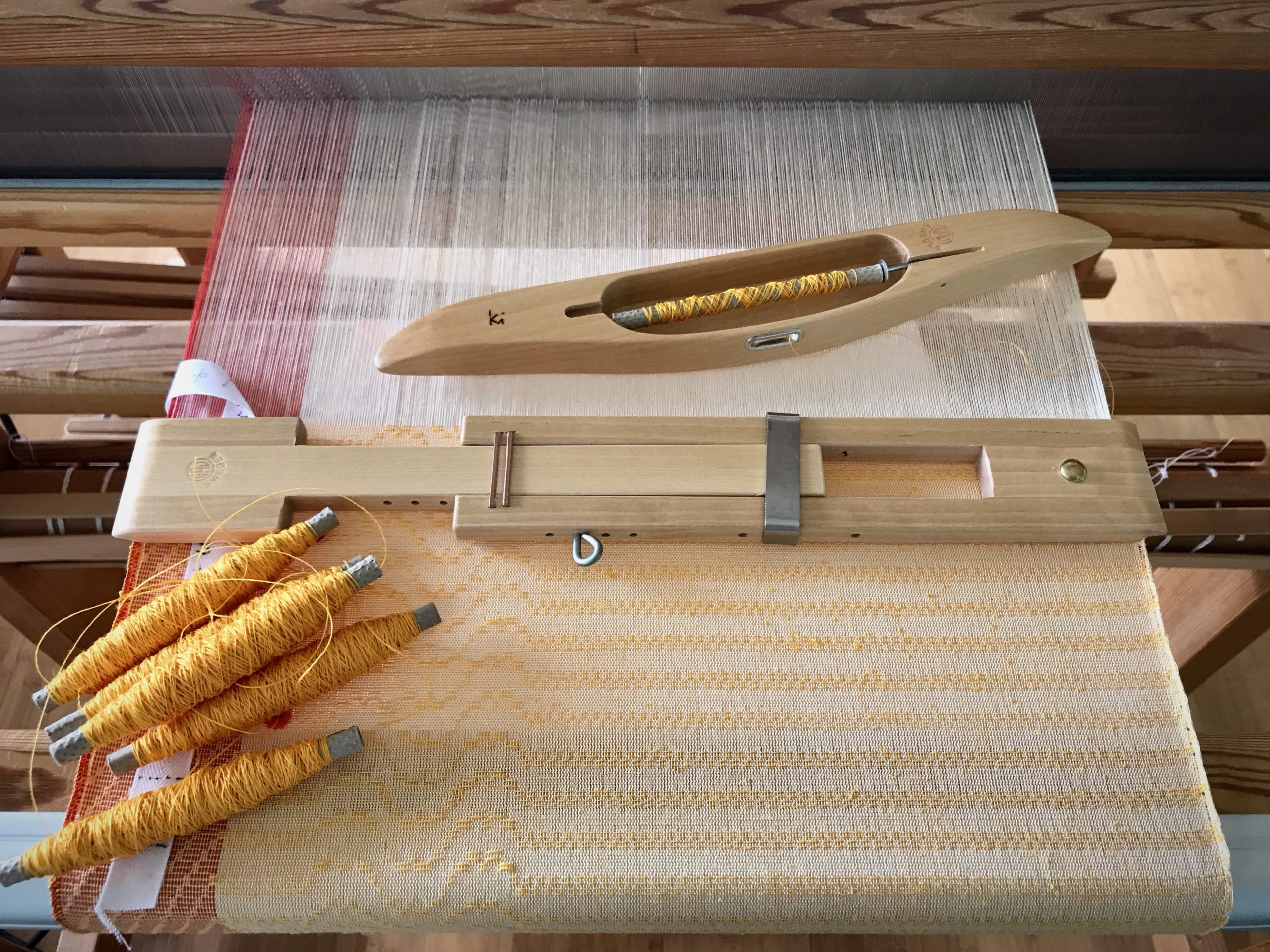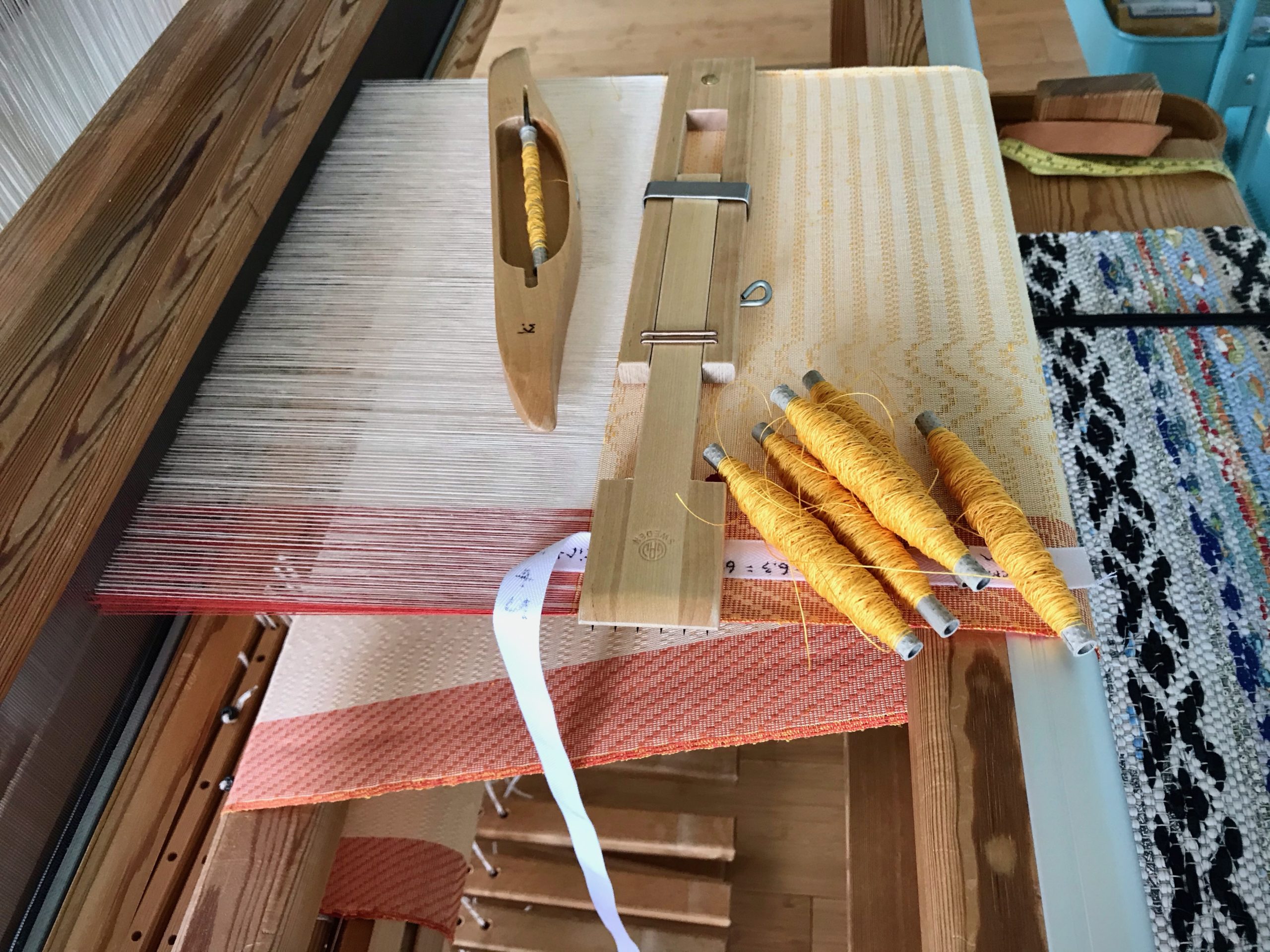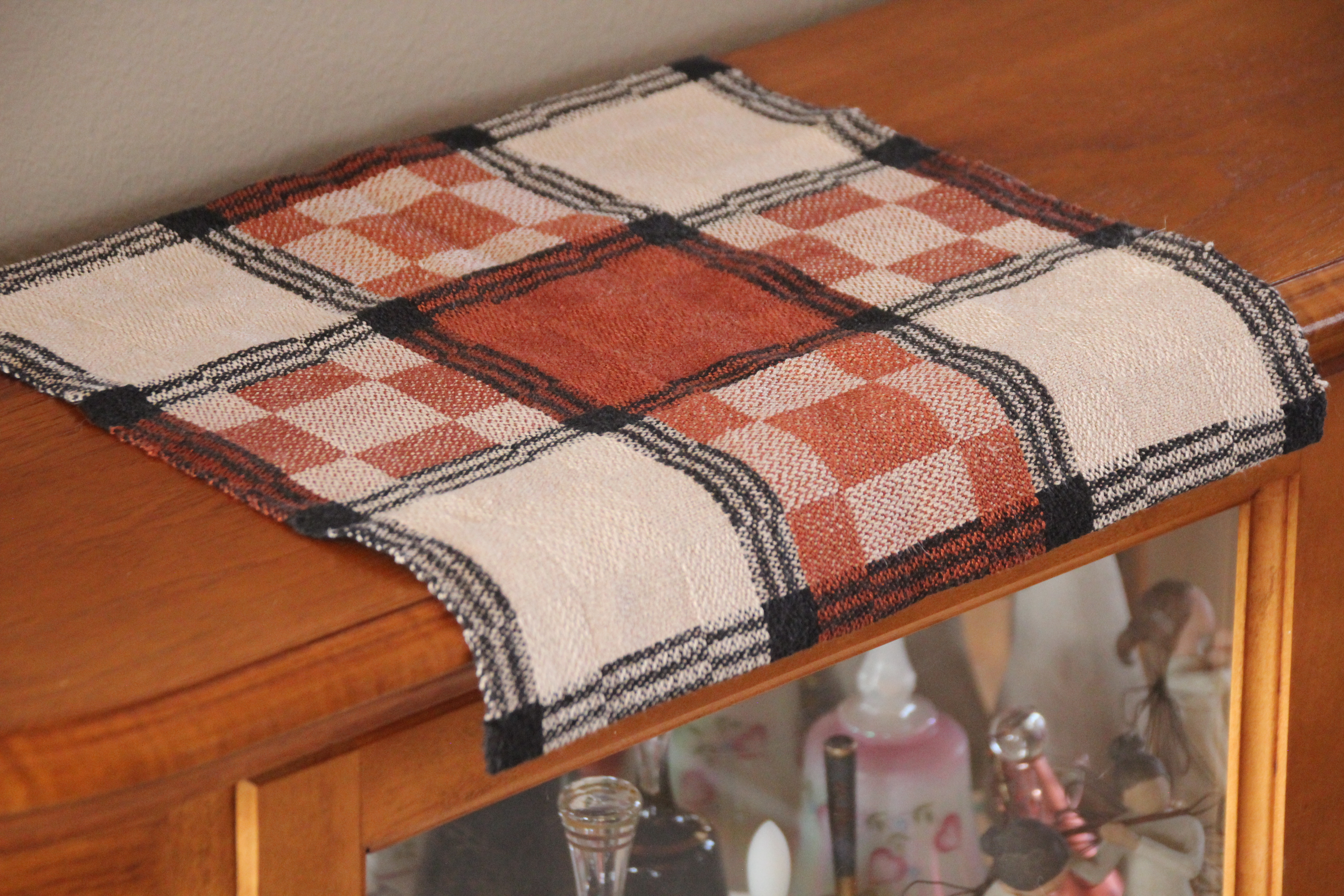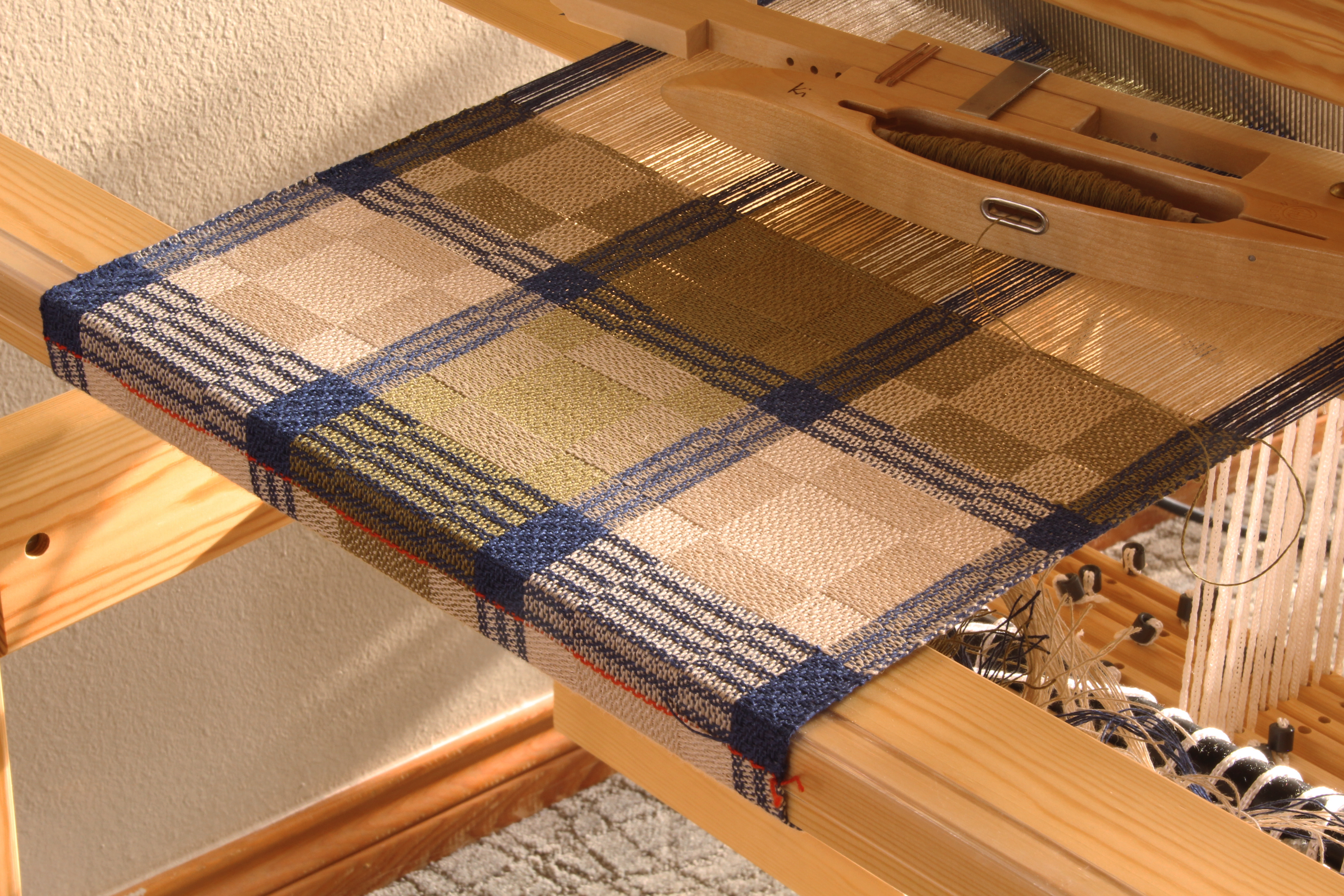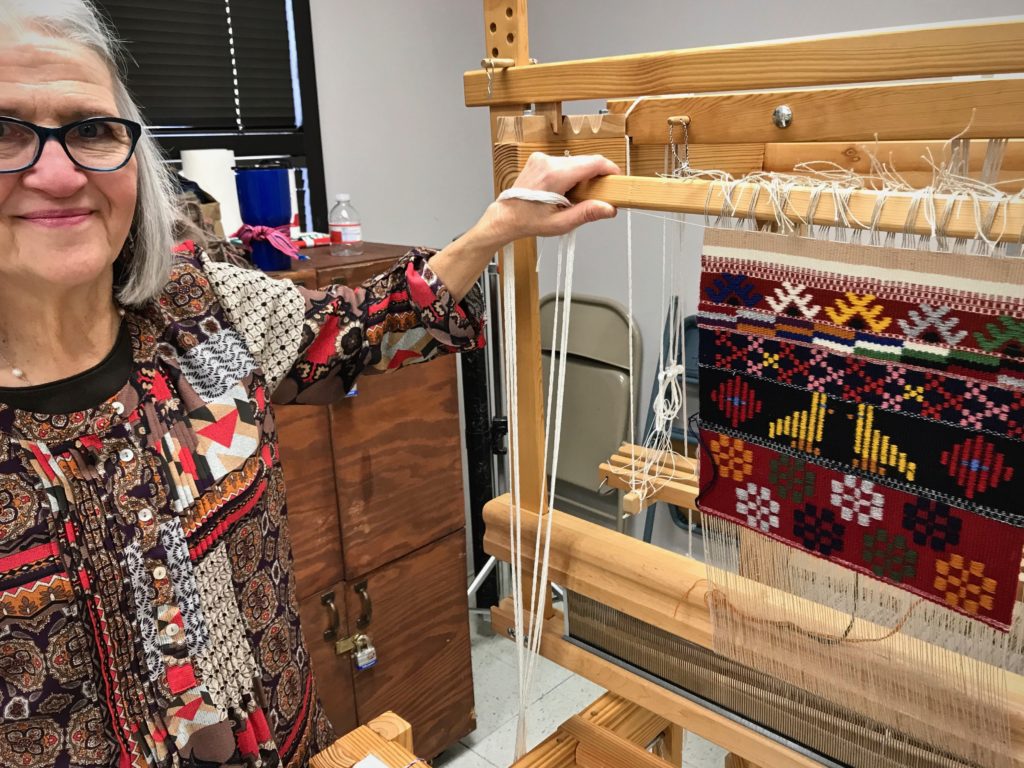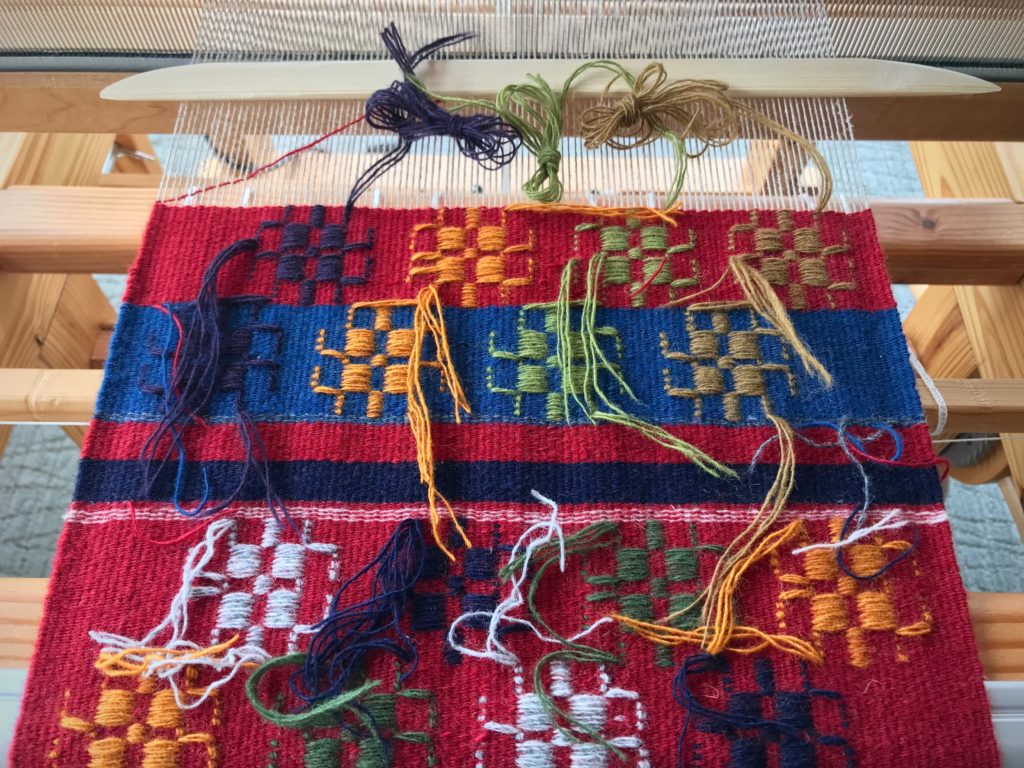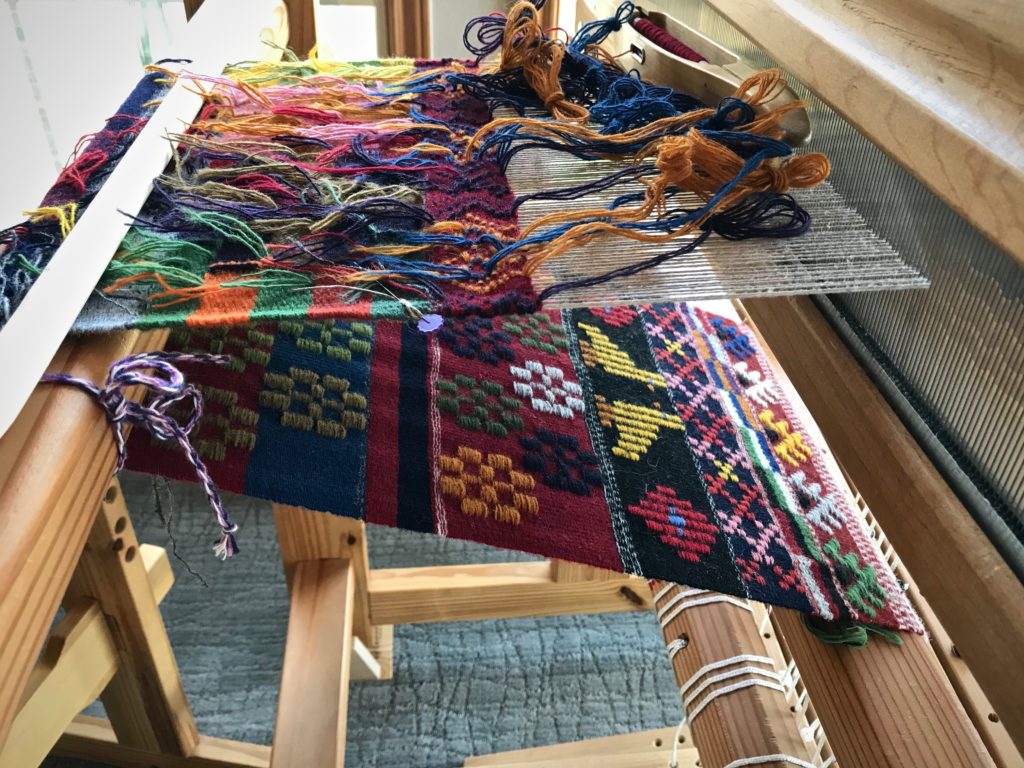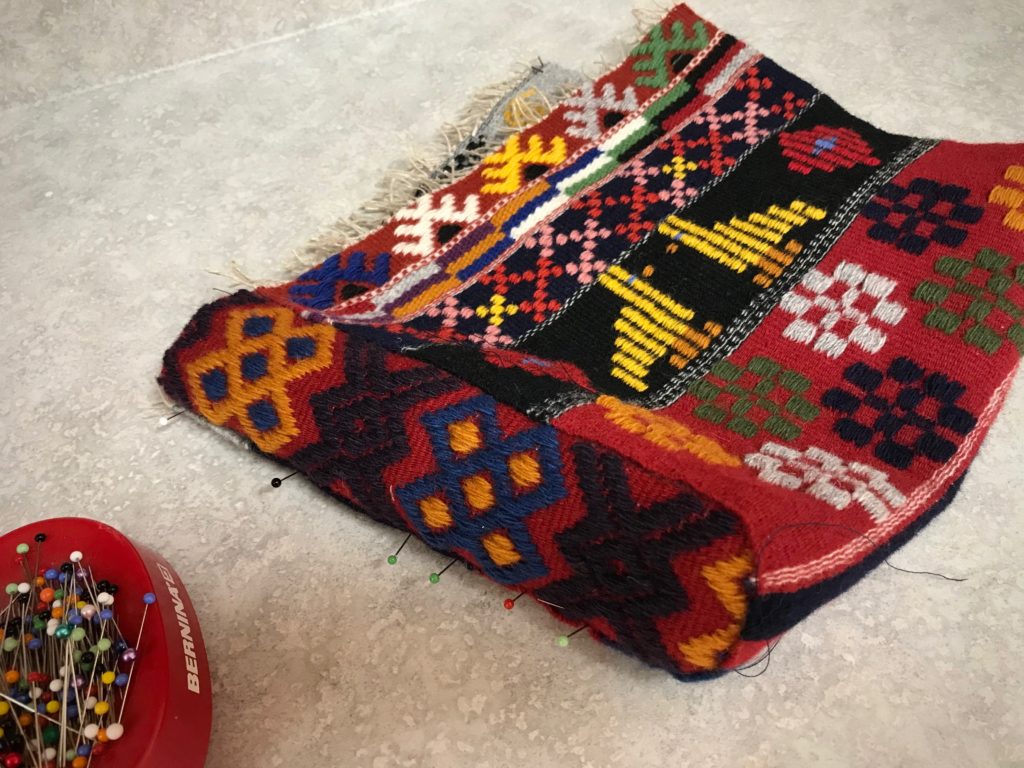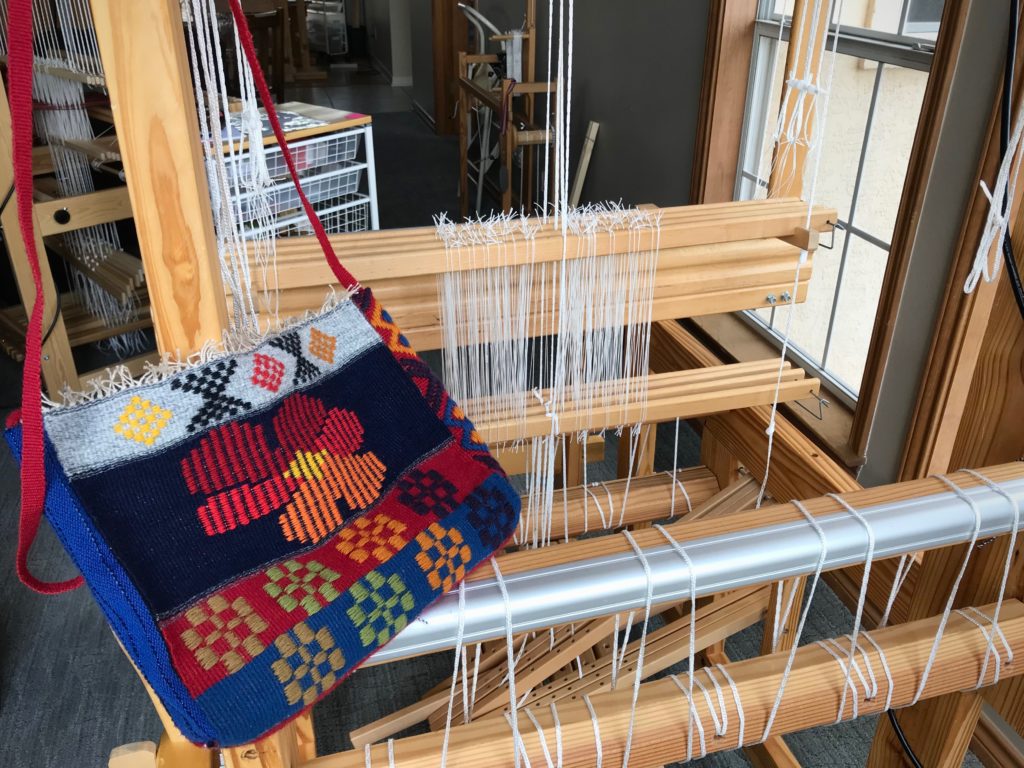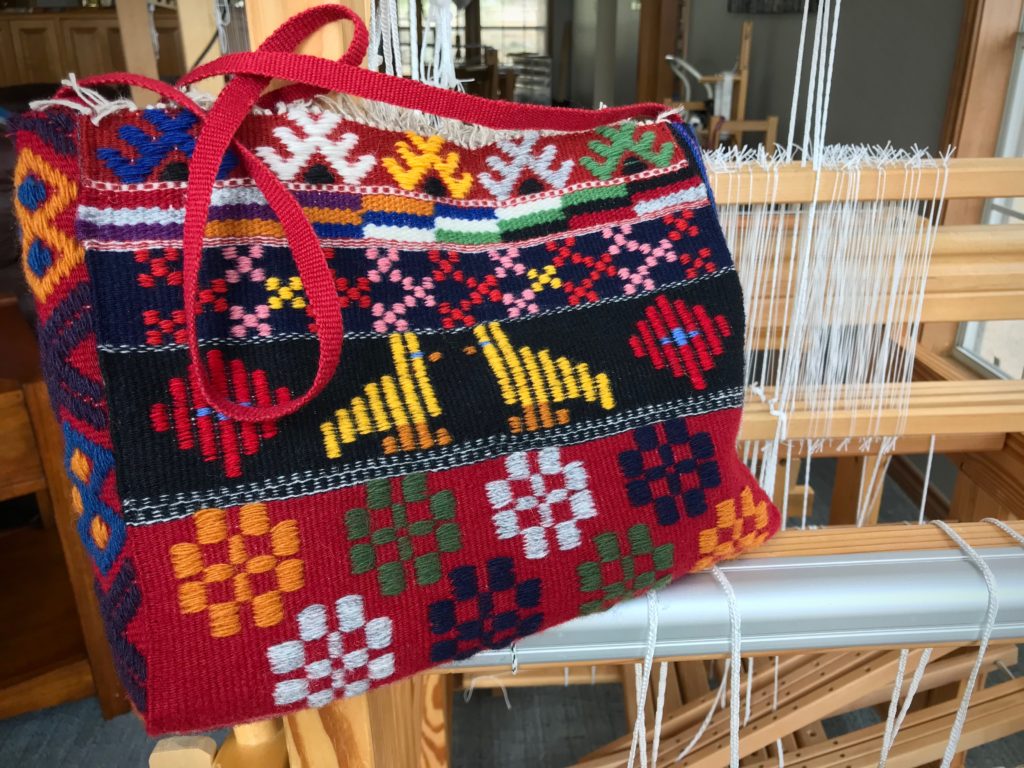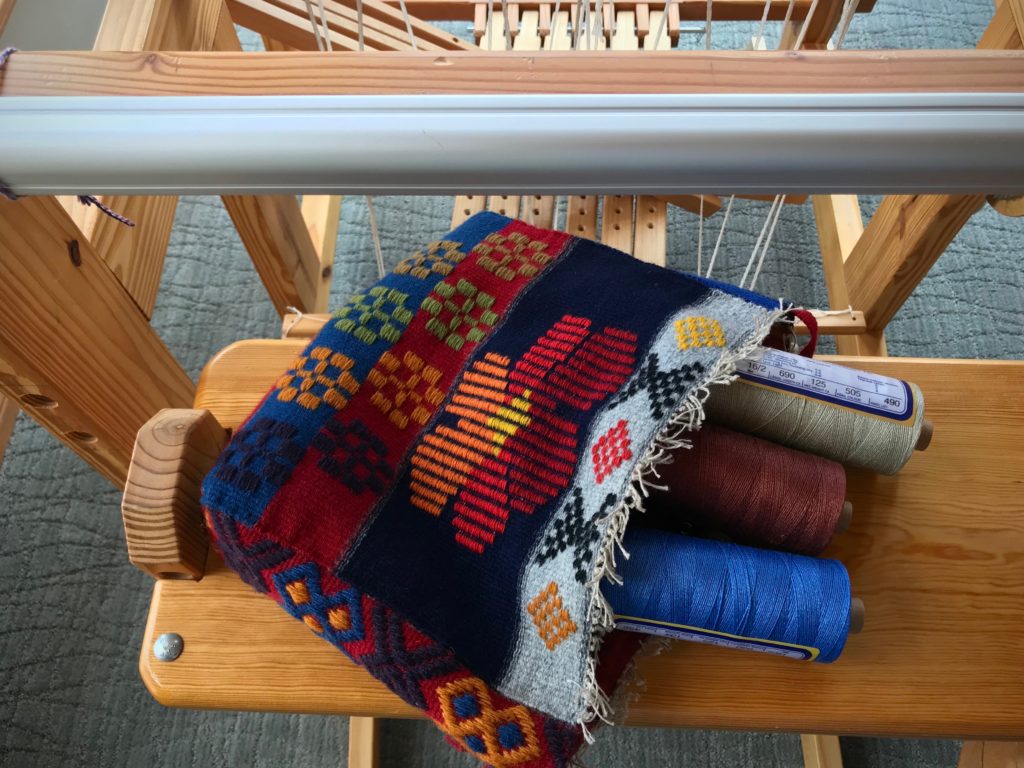Snow in Texas Hill Country is minimal. To make up for it, I am putting together a virtual snowstorm—four Christmas Snowflake towels on the drawloom. Each towel has three large snowflakes at the bottom and top borders. The body of the towel has delicate snowflake crystals drifting to the ground.
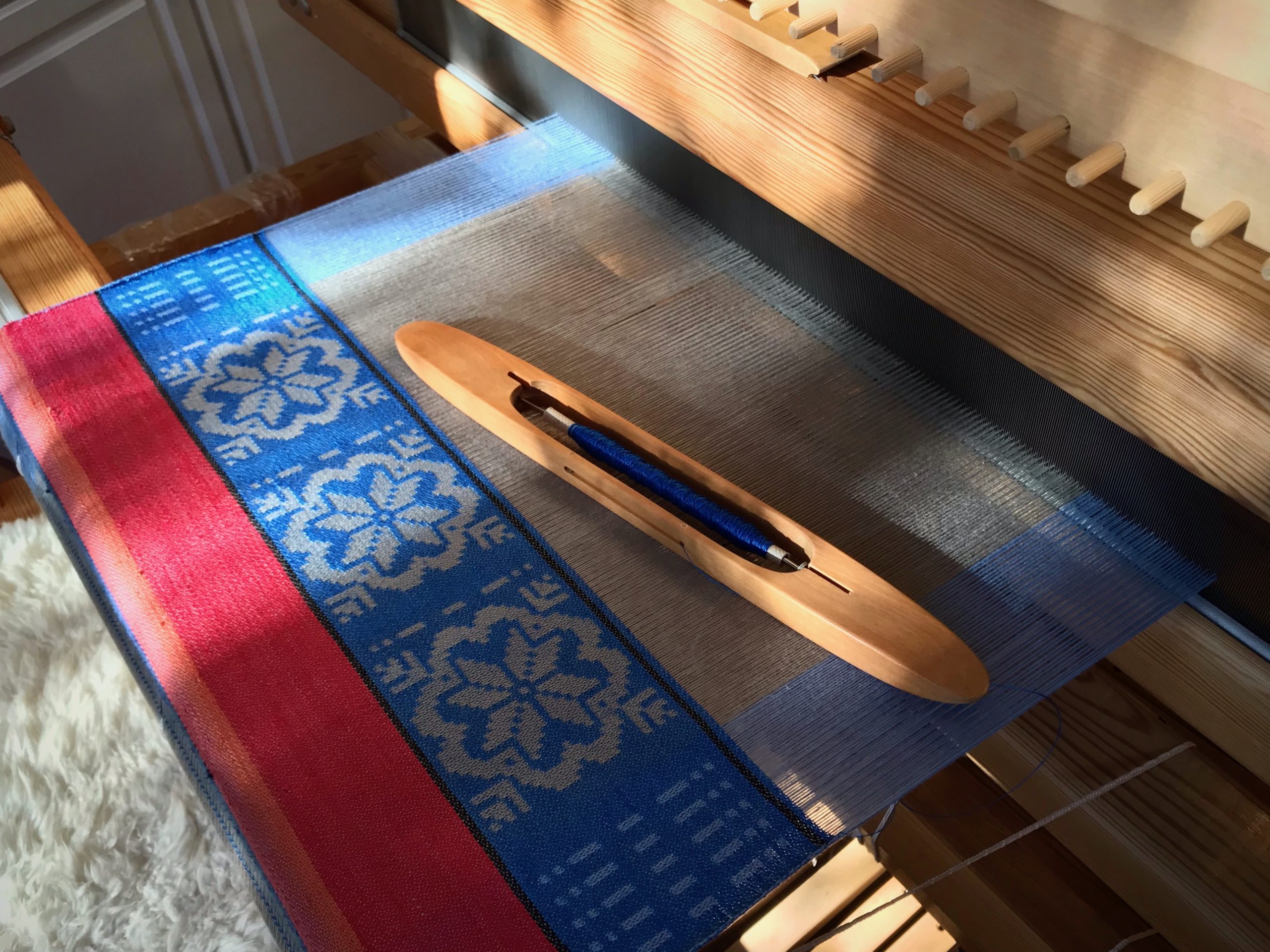
Starting with Selbu Mittens: Discover the Rich history of a Norwegian Knitting Tradition, by Anne Bårdsgård, I transpose Nordic star patterns into drawloom graphed designs. Affinity Designer (graphic design software) takes the place of graph paper for me. Being vector graphic design, it enables me to make changes without having to start over. I can easily move, separate, copy, and/or transform elements as I work through a design. I print out exactly what I need, scaled up in size without losing clarity, in a format that enhances my ability to make the right moves at the combination drawloom.
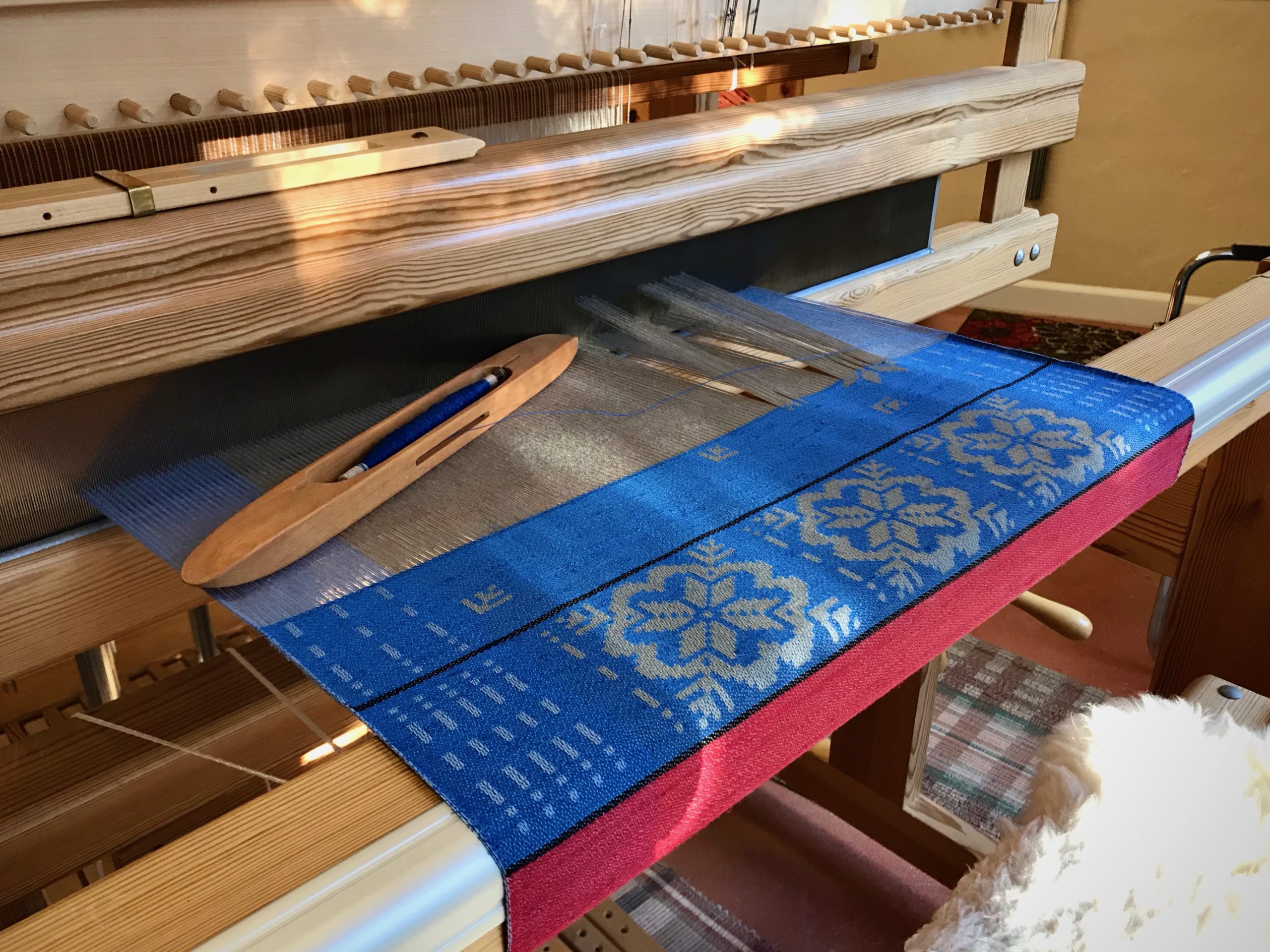
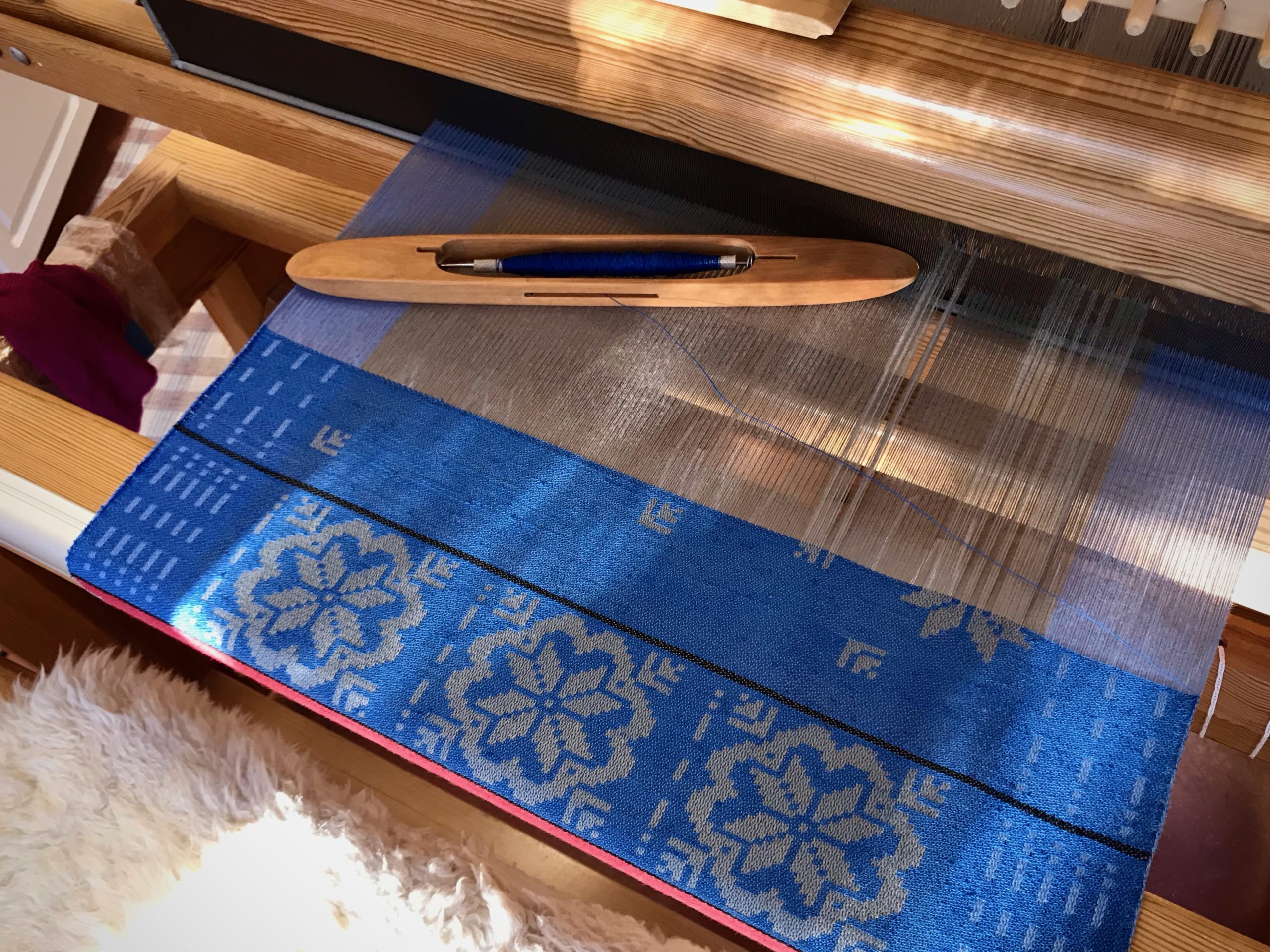
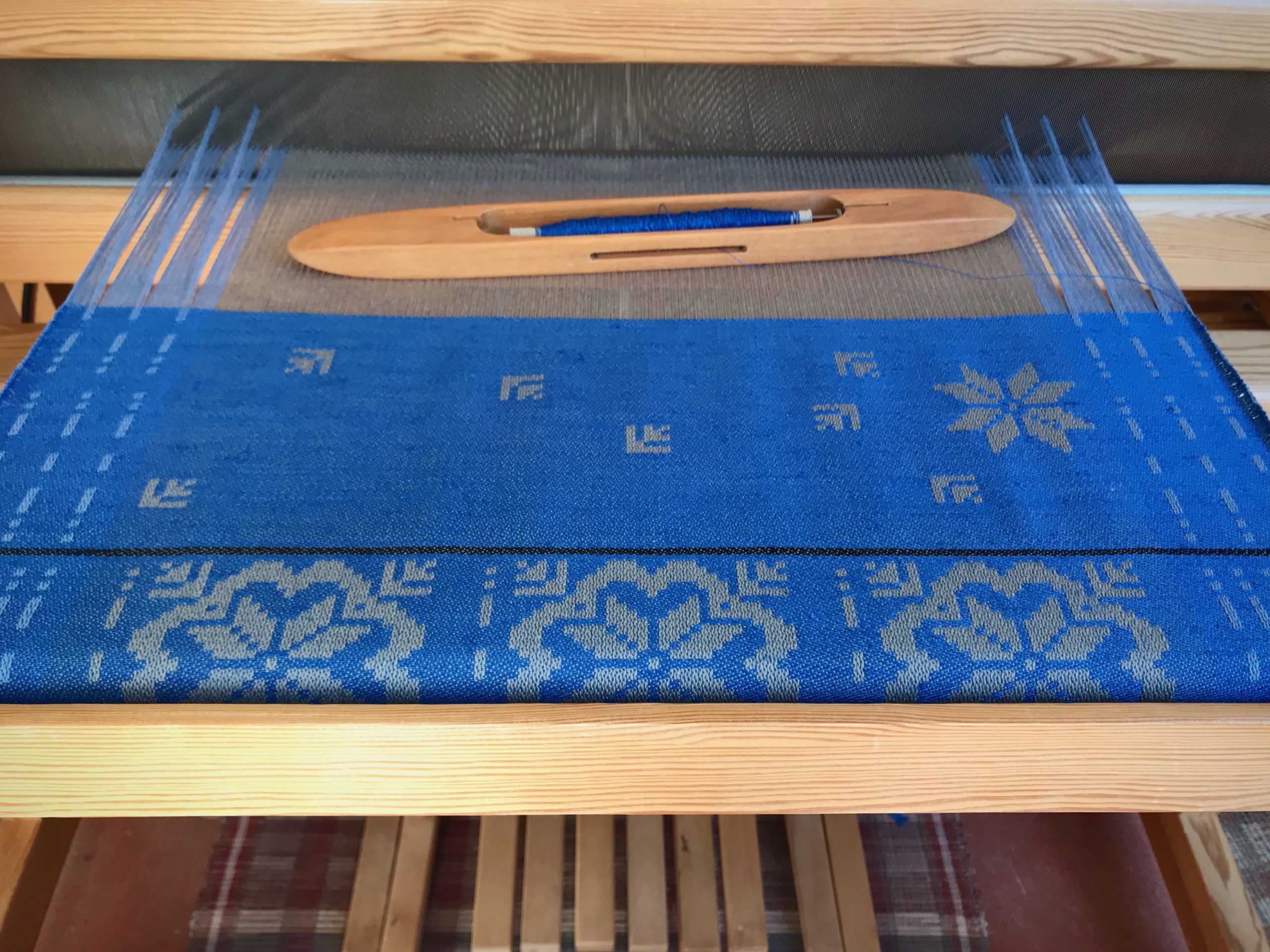
We have a faithful designer. Our Grand Weaver creates his image in us. He moves, separates, copies, and transforms elements in our lives until his image clearly shows. It takes a lifetime. The Lord is faithful. Since he has brought us this far, let us also be found faithful to him, conforming to his image.
May you see how far you’ve come.
Many blessings,
Karen

